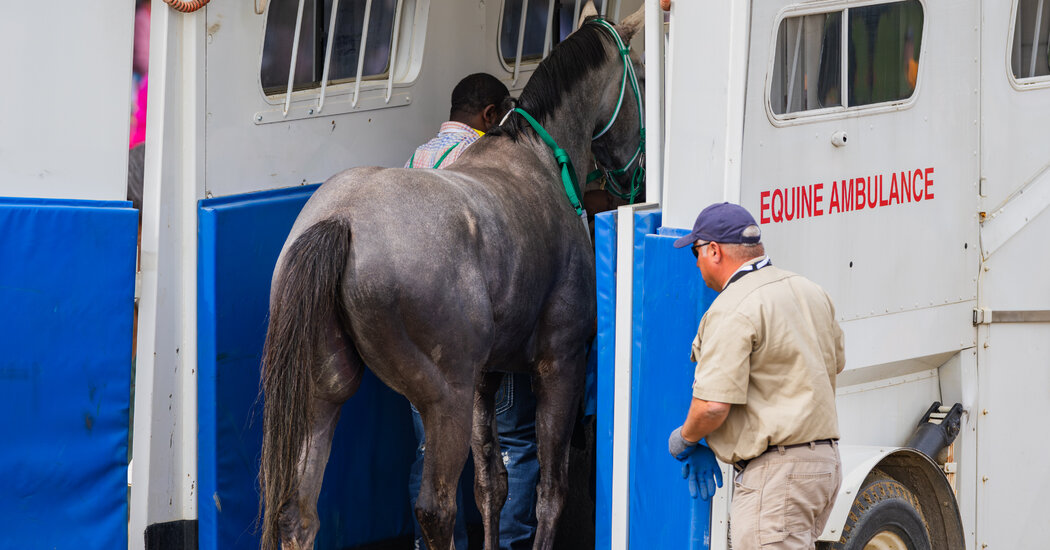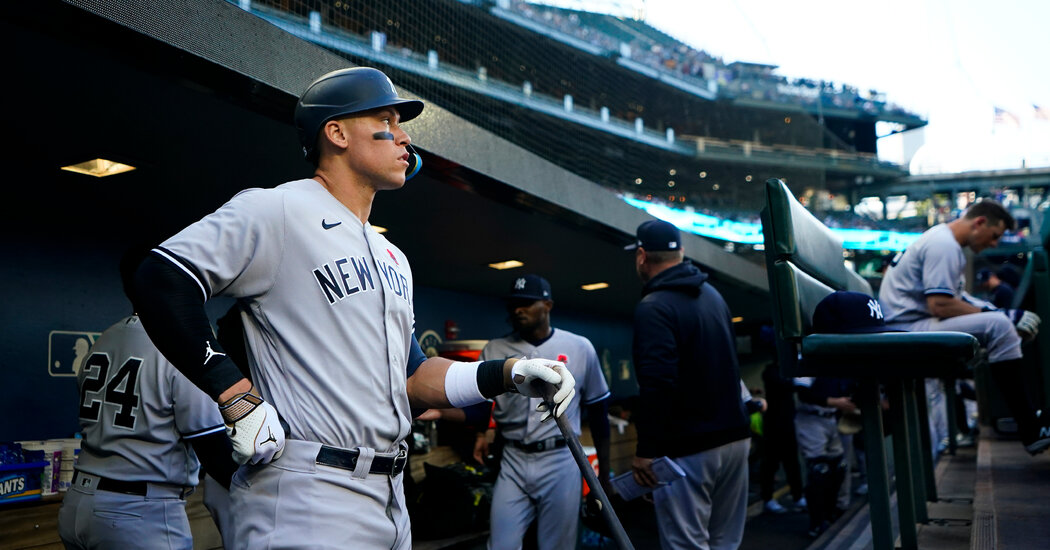Why NFL Running Backs Have Been Devalued
N.F.L. running backs, once the face of many teams, have fallen so far in relative value over the last few decades that it has amounted to a public demotion.
They have seen their contributions derided by data analysts, and their pay slip in relation even to unglamorous offensive linemen. This past off-season, some staged holdouts and others organized a Zoom call to try to fight against their predicament. But the evolution of the game toward passing — and a salary structure that doesn’t reward their brief prime years — may mean that running backs never recover the market power they once had.
In 1997, Barry Sanders of the Detroit Lions was the second-highest-paid player in the league — a time when running back was still one of the marquee positions in all of American sports. Today, not a single one is ranked in the top 100.
And since 2011, the earliest year for which complete data was available, total pay for running backs and fullbacks has increased only about 11 percent. For every other offensive position, total pay has increased at least 90 percent.
To be clear, starting running backs still make a healthy living. Last season, among the N.F.L.’s 32 teams, the 32 highest-paid running backs made an average of $5 million. But the average pay of a top-32 offensive lineman last year was $16.9 million.
This year the highest-paid running back by reported average annual pay is Christian McCaffrey of the San Francisco 49ers at $16 million. This is only about 30 percent as much as the highest-paid quarterback, Justin Herbert of the Los Angeles Chargers ($52 million average).
There is no single reason running backs’ pay is flat; a confluence of factors is working against them.
Teams prioritize passing — even though they still run the ball a lot.
While the N.F.L. has become more of a passing league than it was decades ago, by some surface-level metrics the typical game has not changed much. In 2000, rushing attempts accounted for 46 percent of all offensive snaps and 35 percent of all yards. In 2022, rushing attempts accounted for 45 percent of offensive snaps and 35 percent of all yards.
But not all yards are created equal. “Very few backs are weapons on third down,” when teams often pass to try to keep a drive alive, said Randy Mueller, a former general manager for the Miami Dolphins and New Orleans Saints.
The devaluing of running backs has coincided with their “devaluing on the field,” Mueller said. He pointed to McCaffrey’s ability as a pass catcher as the reason he commands such a large contract.
Since the 2010 season, only one Super Bowl winner (the 2013 Seattle Seahawks) has placed in the bottom half of the league in passing yards, but eight have been in the bottom half in rushing yards. Kansas City won the Super Bowl in February after a regular season with the No. 1-ranked passing game and the 20th-ranked rushing game.
Running backs are seen as interchangeable.
Even teams that care more about improving their running games have started to believe that allocating money toward a single player is not always worth it.
In 2000, the top running back on each team was responsible, on average, for close to 60 percent of his team’s regular-season total rushing yards. But teams are now far more likely to disperse the workload. Last season, the teams’ top rushers accumulated 47 percent of all rushing yards.
Tony Pollard, a running back for the Dallas Cowboys, was paid $11 million less last season than the starter, Ezekiel Elliott, but rushed for more yards on fewer attempts — one of several high-profile examples in recent years of a backup’s performance surpassing a star’s. That has led teams to treat the difference between stars, backups and unsigned free agents as smaller than they used to, which has diminished the value of running backs collectively.
“Relative to other positions, there is less of a difference between the top talent running backs and those on the border of the 53-man roster,” said Kevin Meers, a former director of research and strategy for the Cleveland Browns.
Teams are investing in offensive lines instead.
Total pay for offensive linemen has doubled since 2011. The logic is simple: A strong offensive line benefits the running game whether the starting or backup running back has the ball, and also helps the passing game significantly.
In 1990, according to data from The Atlanta Journal-Constitution, 13 of 28 N.F.L. teams paid their top running back more than their highest-paid offensive lineman. In 2011, only seven of 32 teams did. Going into 2023, only one running back, Derrick Henry of the Tennessee Titans, is set to be paid more (as measured in average annual value) than each of his teammates on the offensive line.
In 2013, running backs were typically the sixth-highest-paid position of what could be considered the 11 offensive starters. Now they are the eighth. Last season, on 17 of 32 teams the second-highest-paid wide receiver was paid more than the highest-paid running back.
Ball carriers are often past their prime when their rookie contracts expire.
The 2011 collective bargaining agreement between the N.F.L. players’ union and the team owners hurt the ability of running backs to be paid well during their early, most productive seasons. The deal mandates that drafted players sign a rookie contract — on a rookie wage scale — for four years, with the possibility of negotiating an extension only after year three.
Peter Schaffer, an agent who has represented running backs including Sanders and Jerome Bettis, said the set duration of contracts “truly affects the compensation.” Running backs, who tend to reach their career peak at a younger age than other players, spend their prime years locked into a rookie contract and are often seen by teams as declining in value by the time they can sign a new deal.
Schaffer said the compensation offered under the franchise tag, a system that allows teams to lock a player into an extra year before he becomes a free agent, was low. The collective bargaining agreement that dictates rules around the rookie wage scale and franchise tag process expires in 2030.
There’s no simple way to measure a position’s peak age, but the median age for All-Pro running backs since 2000 has been 25, while the median age for All-Pro quarterbacks has been 30. Running backs are unlikely to have their most productive and healthy seasons even in their late 20s.
Another way of measuring longevity: Since 2000, only 24 percent of starting N.F.L. running backs were still starting four years later, lower than the 33 percent rate for wide receivers and 47 percent rate for quarterbacks.
When teams are faced with the choice of paying a high-performing player coming off a rookie contract, or drafting a rookie who will be on a favorable contract for several years, the risk of paying a premium for a player who may soon be in decline is often unappealing.
Phillip Lindsay’s career trajectory is not uncommon. In 2018, he signed as an undrafted free agent with the Denver Broncos. His rookie season, when he was 24, was his best year, and he was named to a Pro Football Writers of America All-A.F.C. team. By the time he was able to sign his second contract, he was turning 27 and his productivity had already greatly declined. His career earnings were just under $6 million before he left the N.F.L. and joined the Seattle Sea Dragons of the XFL.
“There’s really nothing we can do,” the Browns’ Nick Chubb, a four-time Pro Bowler, told reporters in July after taking part in the running backs’ Zoom call to discuss pay.
“If we go out there and run 2,000 yards with so many carries, the next year they’re going to say you’re probably worn down.”


